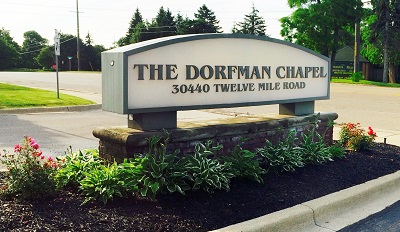Jewish Traditions
Through its rich traditions, Judaism guides a family from before the
time of death through death and burial and eventually back to society.
- Burial and mourning practices
- Many questions regarding burial and mourning practices can easily be answered
from the Conservative Rabbinical Assembly- Michigan Region's brochure.
- The Mourner's Kaddish-
- See our Mourner's Kddish prayer with Hebrew, English pronunciation guide and translation, and a link to a video recitation of the prayer in Hebrew.
- Common Hebrew Terms- Here are a list of some common hebrew terms associated with burials you might hear.
-
- Chevra Kaddisha
- A holy society which takes charge of a body to clean and bathe and dress the body for burial
- Taharah
- A ritual pouring of water over the deceased
- Tachrichim
- A plain white shroud the body is dressed in
- K'vod hamet
- Honoring the dead
- Shemira and Shomer
- From the moment of death, the body is not left alone until after burial.
This practice, called guarding/watching (shemira), and is done by a shomer.
- Vidui
- Final confession
- Keriah
- Tearing of an outer garment, or more commonly now, the black ribbon
- Tzidduk hadin
- "Justification of judgement" is usually chanted
- El malei rachamim
- The memorial prayer (Compassionate God)
- Shiva
- Means seven and is the traditional number of days for mourning where the family does not
leave the house
- Kaddish
- Memorial prayers
- Shloshim
- Means 30 and is the traditional number of days the mourners say memorial prayers at synagogue
- Yahrzeit
- Anniversary of the death (based on the HEBREW date of death)
- Yizkor
- Memorial prayers said on Yom Kippur
Back to top

